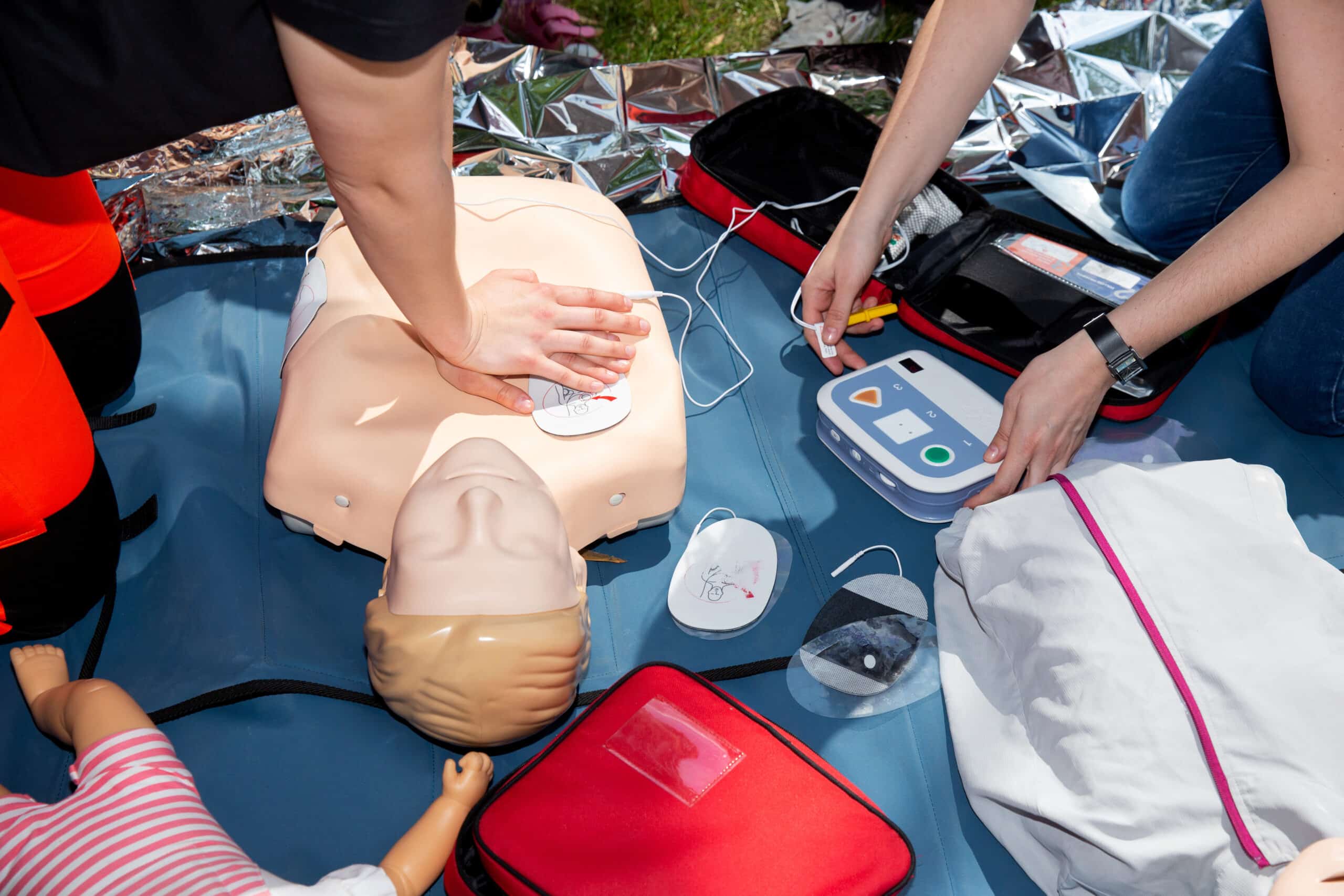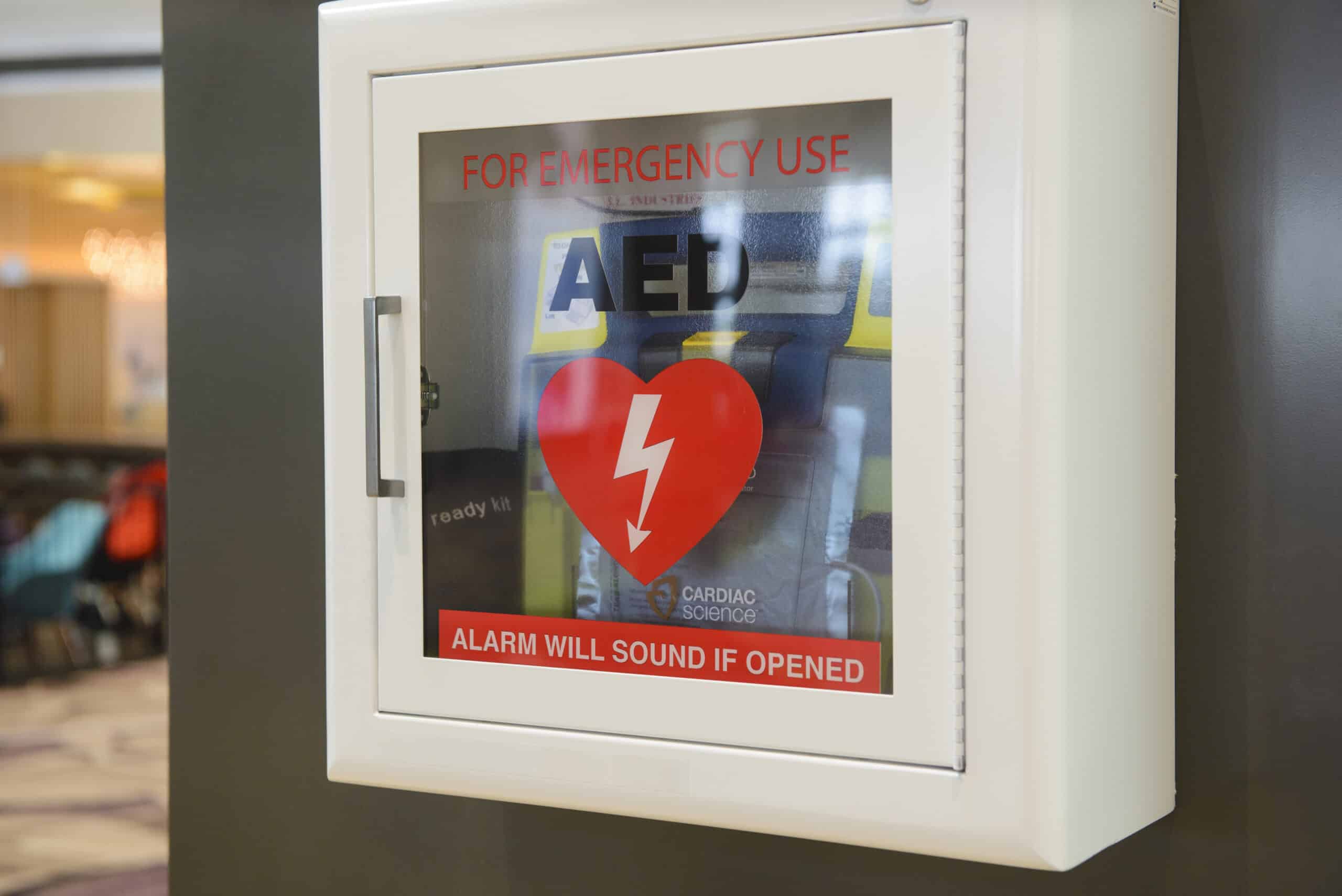The Almighty AED
CPR is based around 3 foundational skills: Compressions, Ventilations, and the use of an AED, but what if I told you that compressions and ventilations during CPR are not enough to bring anyone “back to life”, and the only way the general population could truly save someone from cardiac arrest is by using an AED? Would you believe me? You should.
Don’t get me wrong here, in our classes I teach that compressions are king and it’s true. What good is it to save someone if their brain and vital organs have gone 10+ minutes without Oxygen? It’s not. You must keep the brain and vital organs “alive” with Compressions and Ventilations, or that patient’s quality of life will be reduced to that of a vegetable if they’re resuscitated. What most people don’t realize or understand is the importance of Automated External Defibrillators (AED’s).
Without diving down the rabbit hole, I’ll try to explain the why’s, what’s, and how’s of public use AED’s… When someone goes into Full Arrest (Cardiac & Respiratory Arrest), which can happen for a multitude of reasons, their heart hasn’t fully stopped, contrary to popular belief. It’s in somewhat of a dysrhythmia at this point, and there’s a good chance (especially in the first 5 minutes) that this dysrhythmia may be either Ventricular Tachycardia (V-Tach) or Ventricular Fibrillation (V-fib). Now why’s that important? Because V-Tach and V-Fib are not stable rhythms conducive surviving, but they are “shockable” rhythms. This means that if we’re able to put an AED on someone and it reads V-Tach or V-Fib we can “shock” or defibrillate them. By defibrillating them you are “administering a controlled electric shock to restore a normal rhythm,” hence saving them.

There’s a lot of statistics out there, “Ventricular fibrillation (VF) is present in almost 90% of adult cardiac arrest; the only way to stop VF is with a defibrillator” and “for every minute an AED is not used on a Cardiac Arrest victim their survival probability drops by 7-10%” per the AHA. So why aren’t these AED’s more widely available and used? I think there’s a few reasons here:
– Lack of Education: Most people that take our classes have no clue what an AED is or how to use it.
– General shyness around AED’s: I get it, electricity + lack of training = a recipe for failure. The good news is that all Public AED’s you would find in churches, airports, libraries, etc. are virtually fail proof. (The only time you could hurt someone is if you were shocking the victim while other rescuers are touching them. AED’s will only shock a person in true V-Tach or V-Fib.)
– Cost: AED’s start at $900 and go up from there. Disclaimer here: Not all AEDs are equal either (the few I’d recommend our in our shop). But what’s the price you would put on a life? Easy answer, right? In the grand scheme of things $1,000 isn’t much if you’re comparing it to someone’s mom, dad, sister, brother, husband, or wife.
So that’s what we’re here to change. Through detailed educated, experienced training, and reasonable prices I believe we can make these AED’s more widely available in all public and private buildings along with personal homes. The technology is right in front of us and means the difference between life and death, so it’s time we all benefit from it. Wherever you may be, find a company that provides both AED’s and the training to go along with. Someone’s life depends on it.
I’m always available if you need me,
Brent Bousquet – Co-Founder, President
IGH Health, Fire, & Safety
info@ighsafety.com
(817) 797-6348
ighsafety.com


